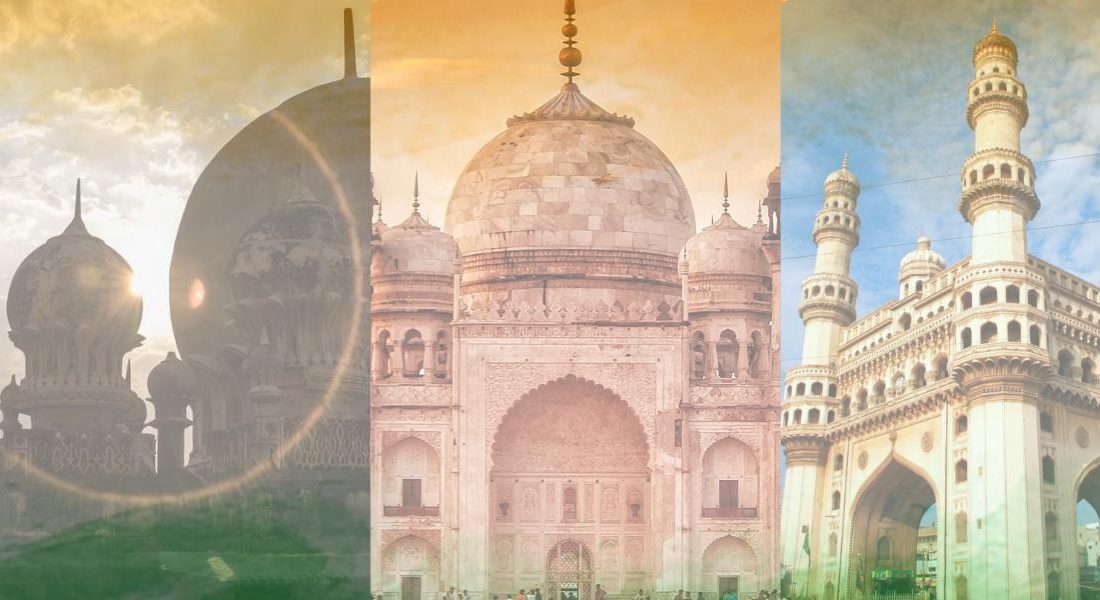Beyond the Taj: 7 Wonders Built By Indian Muslims
It’s common knowledge that India’s most iconic monument, the Taj Mahal, was built by Muslim ruler Shahjahan. What’s less commonly known is that several of the nation’s most famous historic monuments, from tombs to fortresses to towers, were built by Indian Muslims.
Today, let’s look at seven feats of architecture that are just as wondrous as the Taj Mahal.
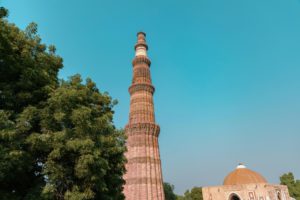
1. Qutb Minar: The Victory Tower
Towering over Delhi is the Qutb Minar: the tallest masonry tower in India, one of the tallest minarets in Asia, and a UNESCO World Heritage site. Made of fluted red sandstone, carved with inscriptions from the Qur’an, and set with marble inlays, the 238-foot monument was built in the early 12th century by Qutb-ud-din Aibak, the founder of the Delhi Sultanate, as a way to celebrate his victories. From the tower’s balconies, muezzins once gave the Muslim call for prayer five times a day.
Qutb Minar serves as the minaret of the historic Quwat-ul-Islam mosque, one of the earliest displays of Indo-Islamic architecture. Both are part of the larger Qutb Minar Complex, which houses other notable structures including the Alai Darwaza, an ornate hand-carved gateway built by Alauddin Khilji, a later ruler of the Delhi Sultanate.
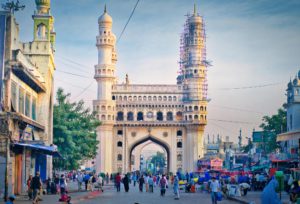
2. Charminar: The Four Minarets
Visit Hyderabad’s heart, and you’ll find Charminar, a four-minaret structure that harmoniously blends both Persian and Hindu architecture. Built in 1591 by Sultan Muhammad Quli Qutb Shah of the Golconda Sultanate, with a mosque on the top floor and pillars that represent each of the first four Muslim caliphs, the monument is said to have several reasons for its construction. Some believe it was built as a gesture of thanks to God following the end of a deadly plague, while others believe it was built to commemorate the start of the second Islamic millennium.
Today, you can find Charminar surrounded by Hyderabad’s famous bazaars, where it remains a bustling center of commerce and tourism.
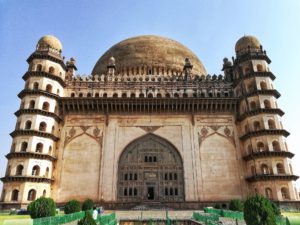
3. Gol Gumbaz: The Whispering Dome
Located in Karnataka’s Vijayapura, formerly Bijapur, the Gol Gumbaz complex is a magnificent product of the Deccan Sultanate, containing a tomb, musicians’ venue, mosques, and guest houses. Built in the 17th century by Muhammad Adil Shah, the seventh sultan of Bijapur, Gol Gumbaz features the second largest dome in the world – measuring 44 meters in diameter – that is only outsized by St. Peter’s Basilica in the Vatican City.
In the Gol Gumbaz tomb is buried Muhammad Adil Shah himself, who is said to have had an obsession with death and feared being buried in a common tomb after his passing.
The structure is renowned for its unique acoustic properties—sounds whispered at one end of the dome can be heard clearly on the other side due to its remarkable Whispering Gallery, in which sounds reverberate up to 11 times. The dome itself is not supported by any pillars, making it one of the most remarkable feats of Indo-Islamic and Deccan architecture.

4. Bibi Ka Maqbara: The Taj Mahal of the Deccan
Often called the “Taj of the Deccan,” Bibi Ka Maqbara in Maharashtra’s Chhatrapati Sambhaji Nagar (formerly known as Aurangabad) was commissioned by Azam Shah, the son of Mughal emperor Aurangzeb, in memory of his mother, Dilras Banu Begum.
Built between 1668 and 1671, it closely resembles the Taj Mahal, with a similar white dome and several towers. Though smaller and considered less grand than the Taj Mahal, Bibi Ka Maqbara is still distinct as one of the few Mughal monuments built in South India. The central mausoleum, made of marble, stands on a raised platform and is surrounded by an elegantly laid Mughal garden with water channels and fountains. The intricate stucco decorations, jali work, and calligraphic inscriptions highlight the refined craftsmanship of the period.
While it does not enjoy the same widespread recognition as the Taj Mahal, Bibi Ka Maqbara holds immense historical and architectural significance as a symbol of filial devotion and Mughal-era aesthetics in the Deccan region.
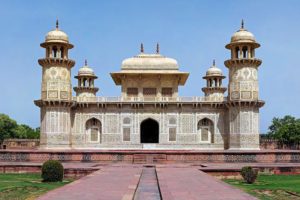
5. Tomb of Itimad-ud-Daulah: The Tribute From Daughter to Father
This grand tomb in Uttar Pradesh’s Agra reflects not only the beauty of Mughal architecture, but also the vision and influence of the Mughal empress Nur Jahan, wife of Emperor Jahangir. Commissioned by Nur Jahan between 1622 and 1628 in memory of her father, Mirza Ghiyas Beg, the mausoleum is often considered a forerunner of the Taj Mahal.
Born Meherunnisa, Nur Jahan was known not only for her captivating beauty, but for her influence over her husband’s court and the close network of men who acted as her loyal supporters. It was because of Nur Jahan that Mirza Ghiyas Beg – who would later be known as Itimad-ud-Daula, or “the pillar of the state” – was appointed Jahangir’s treasurer, and later became his chief minister.
As the Agra Development Authority puts it, the Tomb of Itimad-ud-Daulah “resembles a silver jewel box in marble” – literally built to look like a jewelry box placed in a garden overlooking the Yamuna River. It was one of the first Mughal tombs to be entirely clad in white marble instead of the traditional red sandstone. The tomb features intricate stone inlay work, with a variety of motifs and semi-precious stones embedded into the marble. Delicate lattice screens (jali) allow light to filter through, creating an interplay of shadows inside.
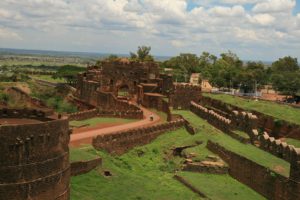
6. Bidar Fort: The City Within A Fortress
One of the most formidable forts in South India, Karnataka’s Bidar Fort was built by the Bahmani Sultanate in the 15th century and later expanded by the Barid Shahi dynasty. Enclosed by 37 massive bastions and surrounded by moats, the fort contains over 30 Indo-Islamic monuments that feature a blend of Hindu, Turkish, and Persian architecture, including royal palaces, audience halls, and mosques.
The Rangin Mahal (Painted Palace) inside the fort is particularly stunning, adorned with Persian tile work, unique wood carvings, and mother-of-pearl inlays. The fort also houses the Solah Khamba Mosque, a three-story residential university, an audience hall, royal baths, kitchens, gardens, and multiple tombs.
So formidable was the Bidar Fort that it withstood attacks even from Mughal emperor Aurangzeb. Today, the fortress continues to hold an air of weighty grandeur, and it has been used as a backdrop in a variety of Indian film projects.
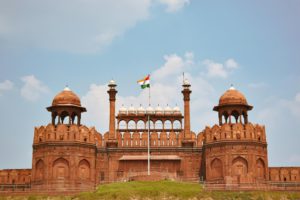
7. Red Fort: The Symbol of Independent and Historic India
When it comes to iconic Indian monuments, the Red Fort follows close behind the Taj Mahal in terms of historic and cultural significance. Built by Mughal Emperor Shah Jahan in the 17th century, the Fort served as the main residence of the Mughal emperors for nearly 200 years, and today proudly flies the modern Indian flag from its grand walls.
The massive complex is made of red sandstone, standing 75 feet tall and spreading over 255 acres, and showcases Islamic, Persian, Timurid and Hindu architectural influences. Enclosed within are palaces, entertainment halls, gardens, canals, a mosque, and a drum house that was used to announce the arrival of important visitors. The Lahori Gate, the main entrance, leads to a bustling market known as Chatta Chowk, which once housed artisans and traders catering to the royal household. Inside, the Diwan-i-Aam (Hall of Public Audience) and Diwan-i-Khas (Hall of Private Audience) showcase the intricacies of Mughal court life and governance. The fort’s outer design features domes, arches, and pavilions, and numerous balconies.
Today, this iconic Indo-Islamic monument and UNESCO World Heritage site serves as a symbol of India’s pride, where the first Indian Independence Day was celebrated and continues to the site of the Prime Minister’s annual Independence Day address.
_*_
Today, one of the primary ways by which the Indian Hindu supremacist movement seeks to erase Indian Muslims is by attempting to “saffronize” the backstories of these historic sites – whether by claiming the Taj Mahal was actually a temple, or by declaring the Qutb Minar is actually a monument to Vishnu.
Pushing back against this erasure of history is essential not just because it’s a recognition of the vast cultural contributions of Indian Muslims, but because it is integral to preserving the heritage of India itself.

